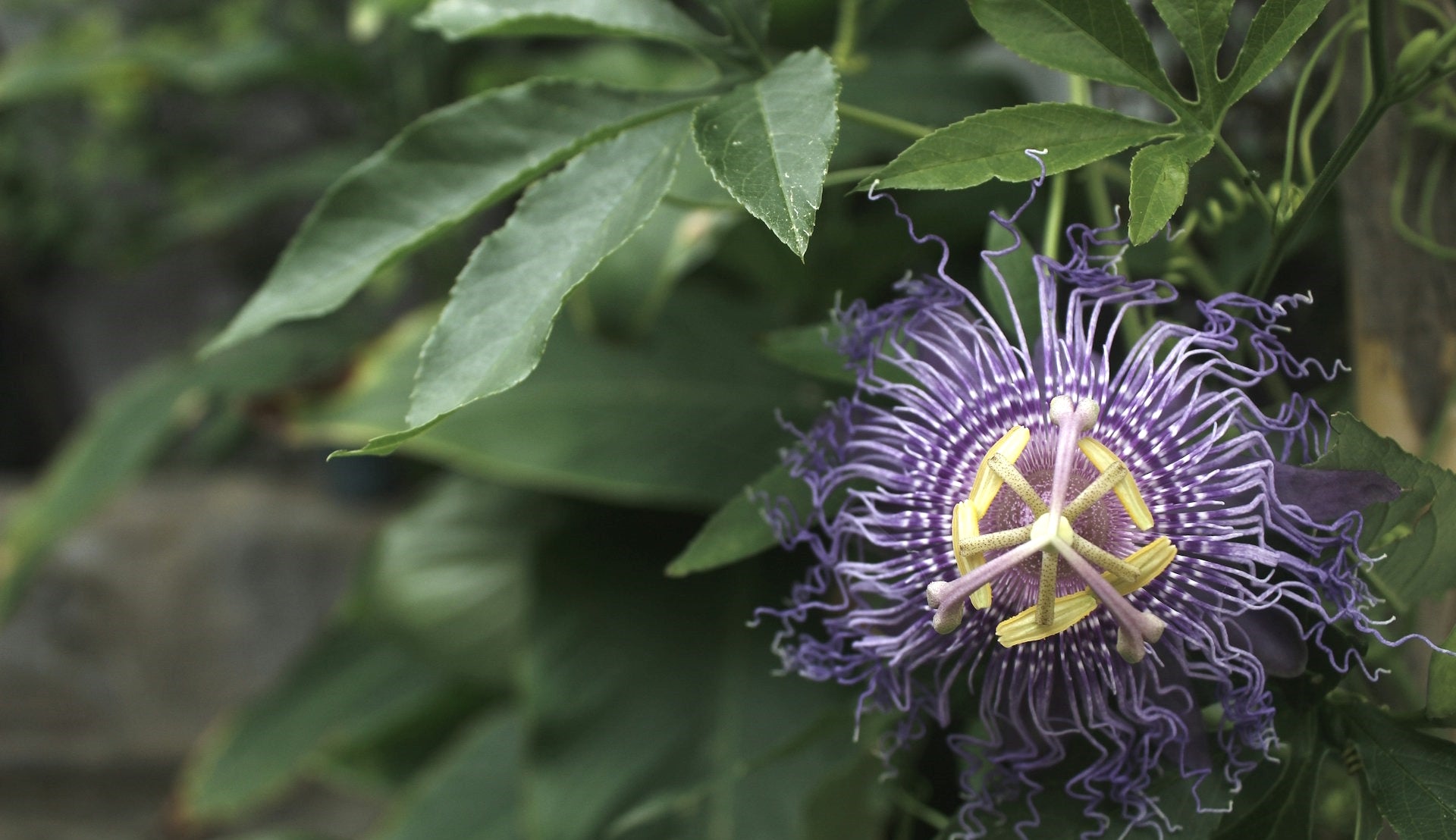
Ingredient spotlight: Passionflower
Ingredient Spotlight: Passionflower
Indigenous Roots and Traditional UsesPassiflora incarnata, commonly known as passionflower, is a flamboyant looking plant with a rich and varied history. Passionflower holds significant cultural and medicinal importance among indigenous peoples of Mesoamerica, particularly in modern-day Mexico and Central America. For centuries, passionflower was revered for its calming and sedative properties, traditionally used in rituals and as a natural remedy to help with restlessness, sleeplessness, and pain relief. The intricate and striking appearance of the passionflower also led to its symbolic association with spirituality, love, and peace. Passionflower has been integrated into various cultures under different names, reflecting its global significance. The Cherokee referred to it as “ocoee,” meaning “the apricot vine place”, and it subsequently became the state wildflower of Tennessee, home of the Ocoee river.
European Encounter and Botanical Fascination
Europeans first encountered the passionflower in Peru in 1569. They were captivated by its unique structure and its potential health benefits. By the early 17th century, it had been introduced to Europe as an ornamental plant. Botanists and herbalists alike were intrigued by the passionflower's distinctive climber's inflorescence and its fabled calming and heart-strengthening effects. Jesuits, in particular, drew symbolic parallels between the flower's parts and the instruments of Jesus Christ's Passion. This religious symbolism is reflected in its Latin name, "Passiflora incarnata," derived from "passio" (suffering), "flos" (flower), and "incarnata" (to make flesh).
Botanical Characteristics and Global Spread
Passiflora incarnata is a perennial climber native to the Southeastern United States, Central America, and South America. It thrives in tropical habitats and has been disseminated worldwide by botanists and plant enthusiasts. The plant's sweet-scented extravagant flowers are fleeting things, blooming between July and September, and opening only for a day or two. Its fruits, egg-shaped berries, are edible but somewhat bland.
Medicinal and Culinary Uses
Passiflora incarnata is one of the most medicinally valuable species within the Passifloraceae family, which comprises around 700 species. While some species are cultivated for their edible fruits, like the passionfruit, others, including Passiflora incarnata, are prized for their therapeutic properties. This plant is categorized as a nervine in herbalism, supporting the nervous system and promoting relaxation and better sleep. Its gentle sedative effects make it a popular remedy in modern Western herbalism for soothing nerves and enhancing well-being.
The Scientific Potential of Passionflower
Passionflower and the power of SleepPassionflower is not just the preserve of herbalists and traditional medicine, recent animal studies have highlighted passionflower's potential to improve sleep quality. Extracts of passionflower were found to significantly increase total sleep time in these studies. This improvement was primarily due to an increase in slow wave sleep (SWS), a deep, restorative phase of sleep. The extracts also showed a tendency to reduce the amount of rapid eye movement (REM) sleep. Excessive REM sleep can disrupt sleep patterns, leading to less restful nights. These findings are promising, though results from animal studies do not always directly translate to humans.
Human Studies on Managing Stress
Passionflower has also been studied for its stress-moderating properties in humans. One trial examined its effects on the stress associated with public speaking, a common and nerve-wracking scenario. Participants who took passionflower extract experienced significant reductions in heart rate and systolic blood pressure compared to those who took a placebo. This effect was especially noticeable during stressful phases, such as public speaking, where heart rates dropped from 86 beats per minute to 74 beats per minute after the speech. If you’re wondering “can Passionflower treat my hypertension” the answer for now is “no”. The study merely shows that Passionflower reduced blood pressure in a commonplace stressful situation in healthy individuals.
Beyond public speaking, passionflower extracts have been used to alleviate tension in other clinical settings, such as dental procedures and surgeries. These studies found that passionflower was effective at reducing stress without impairing psychomotor functions, making it a potentially valuable tool for managing stress. The exact mechanism behind passionflower's calming effects is not fully understood, but it's believed to be linked to its influence on gamma-aminobutyric acid (GABA), a neurotransmitter that helps calm the nervous system.
More than just a Pretty Face
From long before any Europeans set foot in the Americas, to now featuring as an ingredient in a bottle of SENTIA GABA Red, passionflower has maintained its place as a revered and versatile plant. Its journey from the sacred rituals of indigenous cultures to the gardens of Europe; from modern herbal remedies to clinical trials, shows there’s more to this visually stunning flower than just its good looks.
